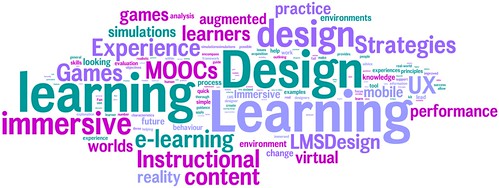this is easy
ICDE 2017 conference notes
In the end more than 1400 delegates gathered to discuss distance education topics at this conference. In one way I found the amount of information overwhelming, but in another it meant a great opportunity to share information and perhaps start new partnerships in further developing our understanding of good design. So amongst all the delegates, my focus became to connect with other ID’s. To learn what they were doing and how they envisioned using technology and design issues. I was fortunate enough to meet a number of the presenters in the hallways to have more indepth conversations about their work. It’s important to keep in mind that these massive conferences are made up of individuals who come to learn and share, so in this instance, I found people to be very open to engage with.
Conference proceedings including all the abstracts and presentation from presenters will be available online by November 30 according to conference organizers. And some very interesting research papers are still available. Research reports are written by some of the DE thought leaders over the past years like Steven Downes and Tony Bates. Check them out here.
In the end a good conference should make you feel energized with ideas. I’ve reconnected with presenters in Canada, US and Mexico and look forward to seeing where these new connections will lead. Good job ICDE organizers for providing this opportunity to connect. The next steps are up to us attendees to keep the momentum going. And apparently the next conference is in Dublin in 2019. Guinness anyone?
What makes a good screencast: The KSV method
Perhaps the largest repository of screencast lectures is found at the Khan Academy. The library of topics covered seems to be growing exponentially. What started as a site to teach mathematics has grown to something that provides insight into sociology, biology, economics, politics and more. The growth of the site is linked to the flow of resources into it from donors who recognize the great work it has accomplished within this type of content delivery.
The success of the Khan Academy is due to its success in presenting information. People would not be tuning into and returning to the site if they did not learn something from it. For us as screencasters, it is also important for us to learn from this success. To that extent view this video from Salman Khan about his screencasting technique.
Screencast resources galore
Bernie Warren identified Kathy Schrock’s Guide to Everything site in his TPC discussion. It is a comprehensive site with tremendous information in a wide variety of topics. As far as screencasting goes, there’s something on it to meet the needs of everyone from beginner to expert. Check out Kathy Schrock’s site here.
Another less daunting way for those considering how to get started is to read The+Professor’s+Guide+to+Creating+Video+with+a+PC. This quick and dirty guide discusses equipment, software and post-production techniques that will serve your needs well. The guide was created by MediaCore, a company that for better or worse, no longer serves education institutions because it was purchased by a large media company and was repurposed for its own needs. None-the-less, the information remains valid.
Enjoy!
TPC at TRU
I’ve enlisted some experienced screencasters to talk about their experience with the technology and the outcomes for their students on Monday, Feb 16 at 1:45 at the TRU campus. For all the details, click here.
If you’re on campus and interested in this topic, please join us.
Flipping the classroom
Delivering information and lectures on-line can open the opportunity to Flip the Classroom. This delivery mode requires students to complete material prior to attending the scheduled class, which is then used for practical work on tasks students have difficulty with. The idea is sound but there are pitfalls. Listen to Robert Talbert, whose five years of using the Flipped Classrom, has provided a wealth of experiences to share.
ID ing
It certainly seems like there is a lot more interest in the skill of instructional design these days.
creative commons licensed ( BY-NC-SA ) flickr photo shared by led-maha.weebly.com. Perhaps this interest comes from the increase in modes of learning that are available today. Particularly in the e-learning realm. People can choose anything from MOOC’s which may have 1,000’s of people in them and last a long time, to a micro-credential course that is completed individually and takes only hours, and everything in between.
The development of any of these courses, went through a design process, whether formal or not. Choices are made on: learning objectives; content, assessment, esthetic, and more. Instructional designers are involved at each step, sometimes as project manager, sometimes as hands-on developer.
In this space we’ll explore the ID role.
Understanding Camtasia
At TRU, Tony Bell is a leader in using screencasts. Tony teaches in Faculty of Accounting. Some of his videos have been viewed over 32,000 times. Either accounting is difficult to learn, students like watching screencasts, or both! Here is Tony describing how to get started in Camtasia.
Getting started with Screencasting

On the scholarly front, Sorden 2005, provides a nice synopsis of how cognitive learning theory support the use of multimedia. Check this out A Cognitive Approach to Instructional Design for Multimedia Learning
On the practical front, this education based marketing brochure from a company provides some good information on the state of video amongest younger people today. Read The Netflix Generation eBook
You can also look for a screencasting session to be provided at the Teaching Practices Colloquium on February 16. I’ve enlisted the support of a number of faculty who been using screencasts in their courses to discuss how this technology has sparked with their students. It’s going to be an informative and hopefully inspiring session, that will fire up others at TRU to give screencasting a try!
If you have anything that you’d like to share about your experience, you’re more than welcome to share it here too.
 ICDE 2017
ICDE 2017
